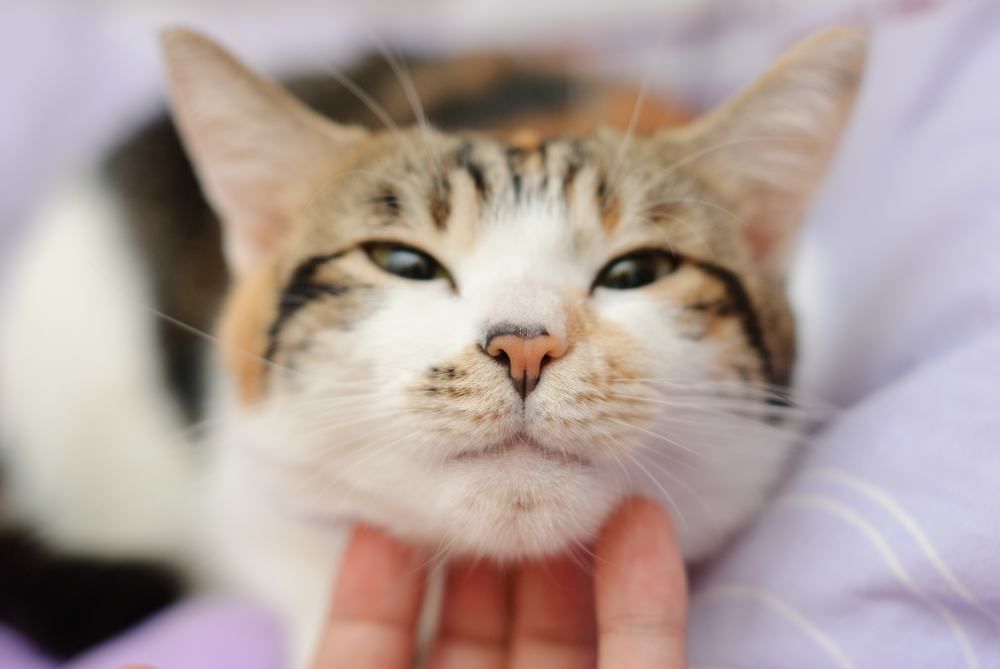
We think that cats do understand human emotions, but their capabilities are somewhat limited. Cats pick up on the basic facial expressions we display and the tone of our voices. For example, they can sense that we are feeling sad, but they will not be able to understand the reason behind the sadness.
Cats are capable of forming strong bonds with their owners. They are very observant and like to be in tune with our emotions. Cats alter their behavior according to our reactions. They are very intelligent creatures and have a basic understanding of human emotions. Some recent studies indicate that cats are capable of showing empathy and compassion toward us. Others think it is more pattern recognition and learned behavior.Key Takeaways
Cats also communicate with us in a variety of different ways. Although we might not have a Google Translate tool for their meowing and purring, we have a pretty good idea about what they are trying to tell us most of the time.
Cat behavior and body language are two of the more common ways that they let other cats and us humans know how they are feeling and that they understand (to a certain extent) what we are feeling, too.
Cats are generally more independent than dogs, so observations and studies are less common. We now know that cats, like dogs, form strong bonds with their pet parents. It is thought that cats might have trained themselves to interpret human emotions by looking at different facial expressions.
This is not technically the same as empathy. It might be that our cats are associating certain emotions with either positive or negative things. The truth is, there is a lot we don’t fully understand about human-animal and specifically human-cat interactions.
It is very easy to anthropomorphize cats when discussing this subject. Anthropomorphism is when we give animals human emotions and behavioral characteristics that they aren’t necessarily capable of. It is often done by us humans as a way of connecting with our pets and is usually harmless even though it’s factually incorrect.
Also Read: Do Cats Have Emotions?
What Does Science Say?
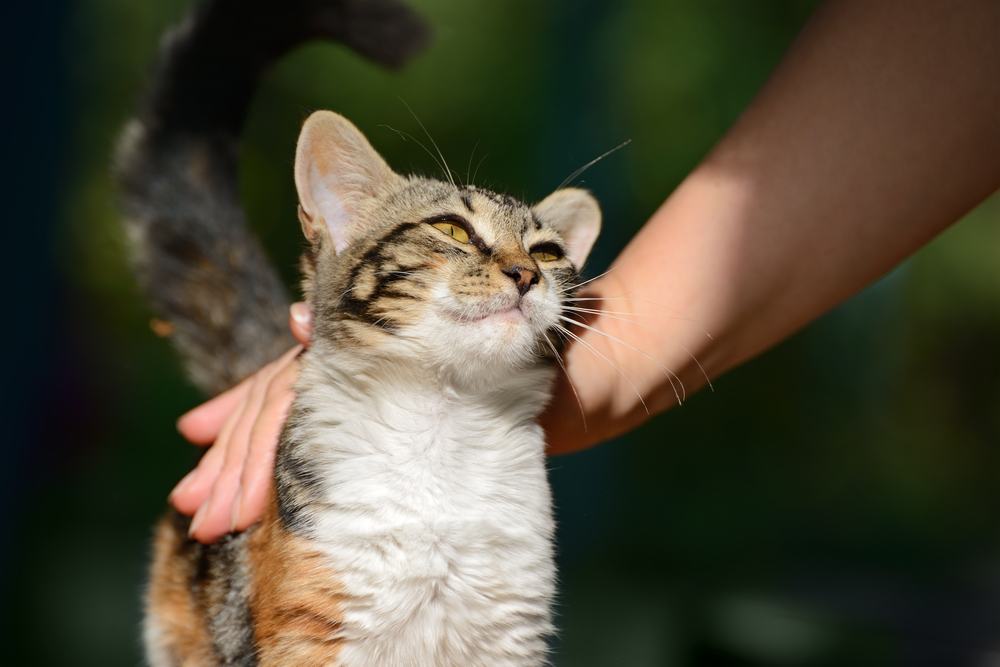
A number of scientific studies have explored cats’ ability to understand human emotions.
Let’s look at what the research tells us about cats’ capability to interpret human emotions. One recent study carried out by researchers in Italy presented a fan covered in ribbons to cats and their owners. (This was intended to be something the cats had not ever seen before that was new and unfamiliar to them.)
The researchers observed that when cat owners acted negatively toward the fan, the cats usually shied away from it, following their owner’s lead. When the owners had a more neutral reaction, the cats usually looked from the owner to the fan and didn’t react. The researchers noted that the cats seemed to change their behavior according to the behavior of their owners.
Another new study by researchers at Nottingham Trent University surveyed 3,000 cat owners and noted that specific personality traits found in owners were also noted in their cats. This hinted that cats might be mirroring the personalities of their owners.
Other anecdotal evidence has seen a change in owners’ relationships with their cats during and after the Covid-19 pandemic. Lots of the world ended up spending much more time at home, so this would have allowed for extra bonding time.
This has been reflected in reports of stronger relationships with cats. There have also been reports of cats adopting special roles in the lives of children with autism, where the cat protects the child and behaves similarly toward them as they would to one of their own kittens. This would indicate they are capable of showing empathy.
Also Read: Can Cats Be Emotional Support Animals?
Can Cats Understand How We Feel?

We don’t speak the same language, but cats have learned how to communicate with humans.
Cats have a few tricks up their sleeve when it comes to connecting with humans. Cats show a wide variety of emotions in their own unique way. They also react differently to different family members depending on their relationship with them.
1. Stares And Slow Blinks
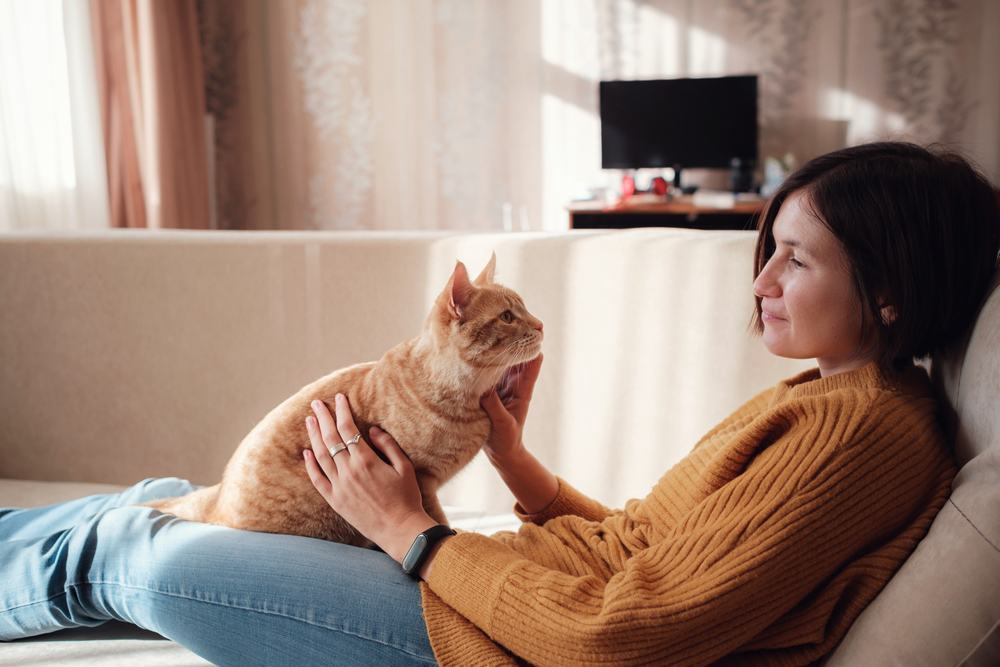
Cats stare into your eyes and blinking slowly to communicate their love.
Cats respond and react to humans holding their gaze and staring straight into their eyes. Lots of cats do something called a “slow blink.” This is where they hold our gaze and then shut their eyes and open them again slowly. This is thought to be the cat equivalent of a smile or a kiss, and means your cat loves and trusts you.
Also Read: 10 Proven Ways To Show Your Cat You Love Her
2. Scents
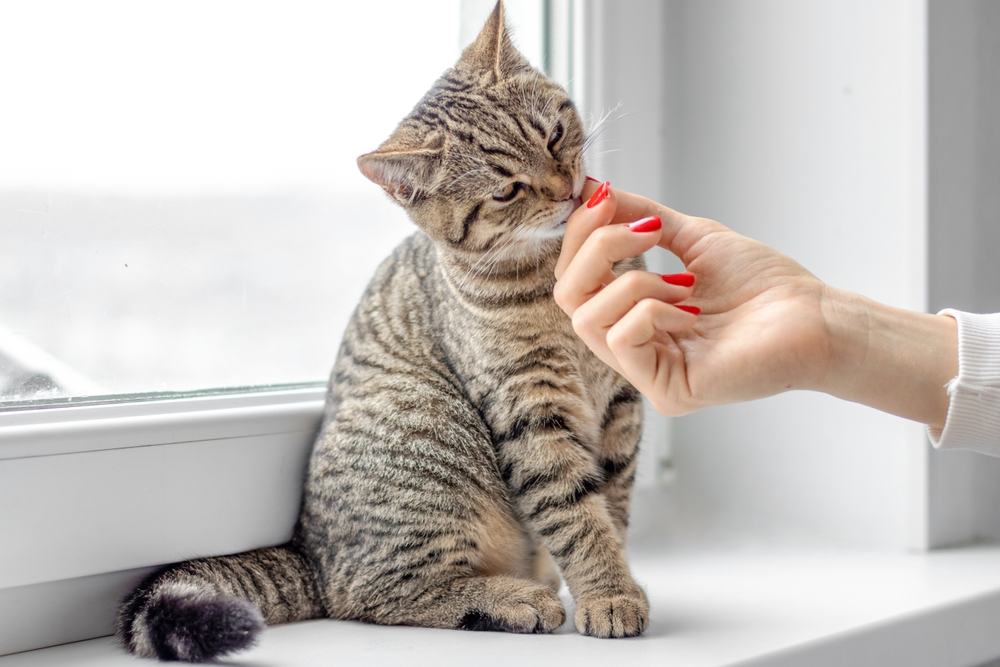
Cats rub on human family members to mark them as part of their social group.
Cats often use our scent to recognize us as a loved one. They also rub their own scent on us and other animals and objects in the home. This is a way that they “mark” us by rubbing special chemical messengers called pheromones on us. They use this to identify us as someone who is safe.
Also Read: How Do Cats Mark Their Territory?
3. Sounds
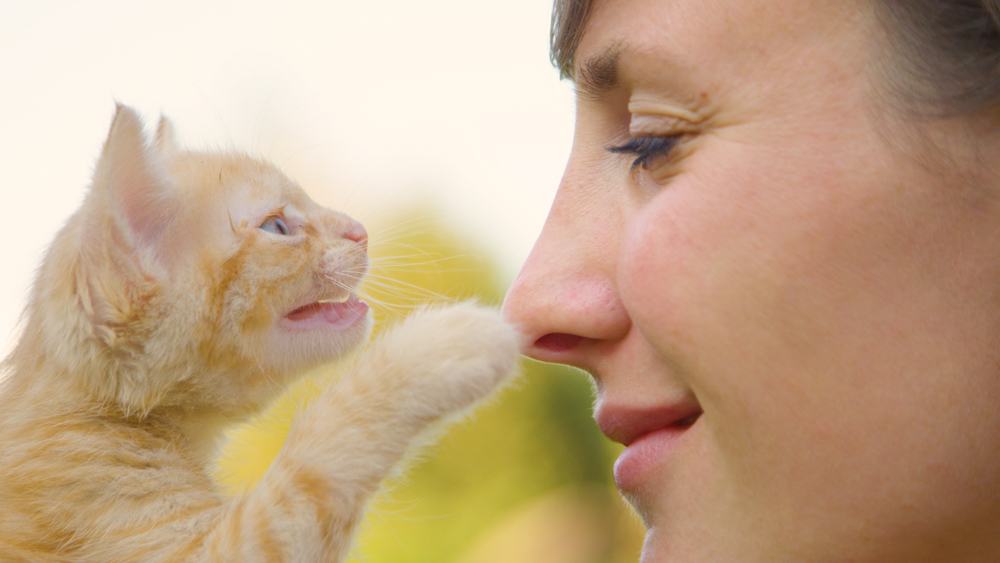
Cats only meow at humans—this method is not used when communicating with other cats.
Cats absolutely do recognize the sound of their significant human’s voice. Cats can determine the emotional state of their human based on the sounds the human is making and the tone of their voice. Cats also alter the sounds and tone of their own voice. A cat’s meow can mean many different things depending on how it is delivered.
Also Read: 7 Common Cat Vocalizations And What They Mean
How Do Cats Interpret Human Emotions?
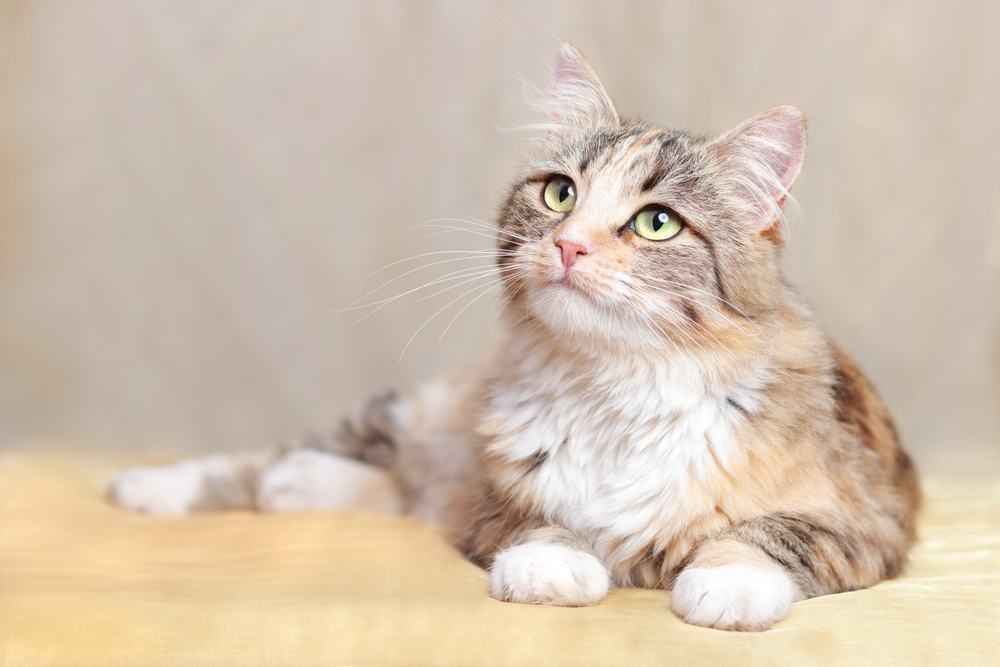
Cats can recognize when something is different based on your facial expressions and the tone and volume of your voice.
If you are displaying any extreme emotion in front of your cat, for example shouting angrily, crying, or laughing, you might notice your cat often stops and stares at you. They are most likely trying to work out what is going on.
Cats might not directly understand that crying means you are sad or shouting means you are angry, but they will get other clues from your body language and act accordingly. Reinforcement and pattern recognition plays a big role here. Your cat will come to learn what sort of behavior follows after certain emotions are displayed.
For example, if you are sad and crying, you might seek attention and cuddles from your cat, so when they see you crying, they might climb on your lap because they know they will be stroked. This might seem like they are comforting us in our hour of need but in reality, it is a case of positive reinforcement and conditioning of certain behaviors. Cats view their home as their own territory and safe place.
If a cat senses there is a problem in that safe place (for example their primary caregiver is crying or shouting) they will be concerned that this behavior might pose a danger to the happy balance of their environment. If your cat purrs and rubs themselves on you, usually your upset feelings or anger subside, restoring harmony to their safe place and in turn making them feel more relaxed. It’s a case of our well-being indirectly affecting their well-being.
Also Read: 8 Reasons You Should Never Punish Your Cat
How Do Our Emotions Affect Our Cats?
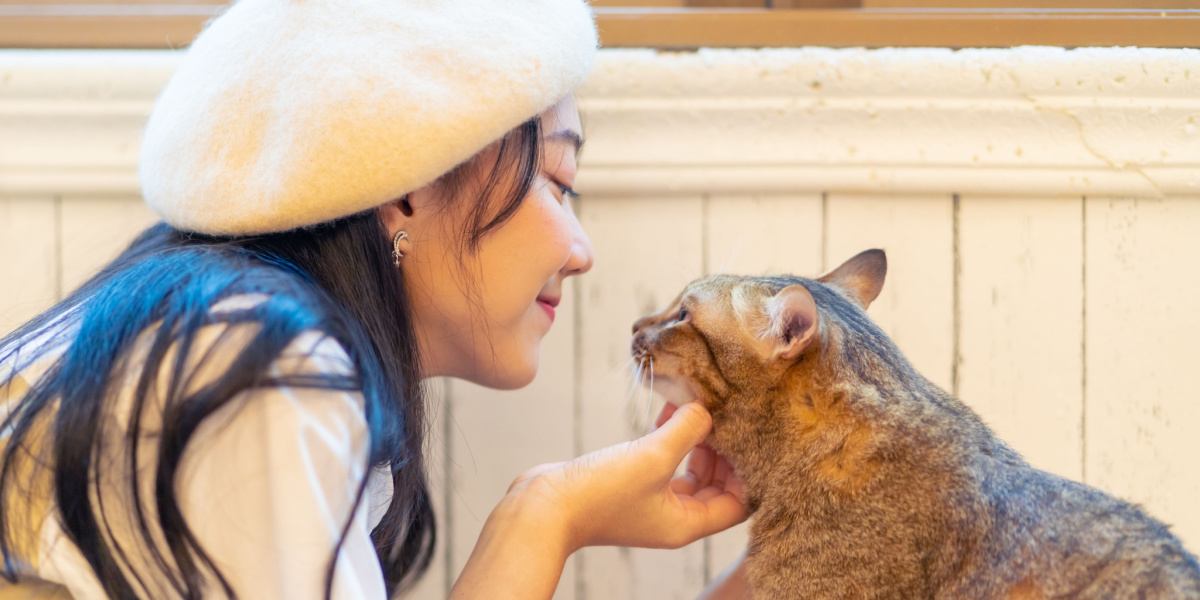
Cats tend to feel relaxed when you are relaxed, and stressed when you are stressed.
Cats can have a huge positive impact on our emotions, and our emotions can have a big influence on them, too. Cats are often anxious if we are angry or stressed as they can sense something is different and they like and expect to feel safe in their home environment.
When we are stomping about in a rage or stressing out, it feels different to them and they don’t like it, so they strive to get back to their usual calm safe environment they know and thrive in. This might mean that they come to us to try and gain some affection or attempt to bond with us.
It doesn’t necessarily mean they are trying to soothe us or calm us down but it might come across this way. There is also a big variation between individual cats, which partly depends on their genetics and partly on their upbringing and social interactions: nature versus nurture. Some people claim male cats are more affectionate than females, but again, this does depend on the individual cat and their social skills.
Also Read: 5 Visual Signs Of A Stressed Cat And How To Help
Cats And Empathy: Final Thoughts
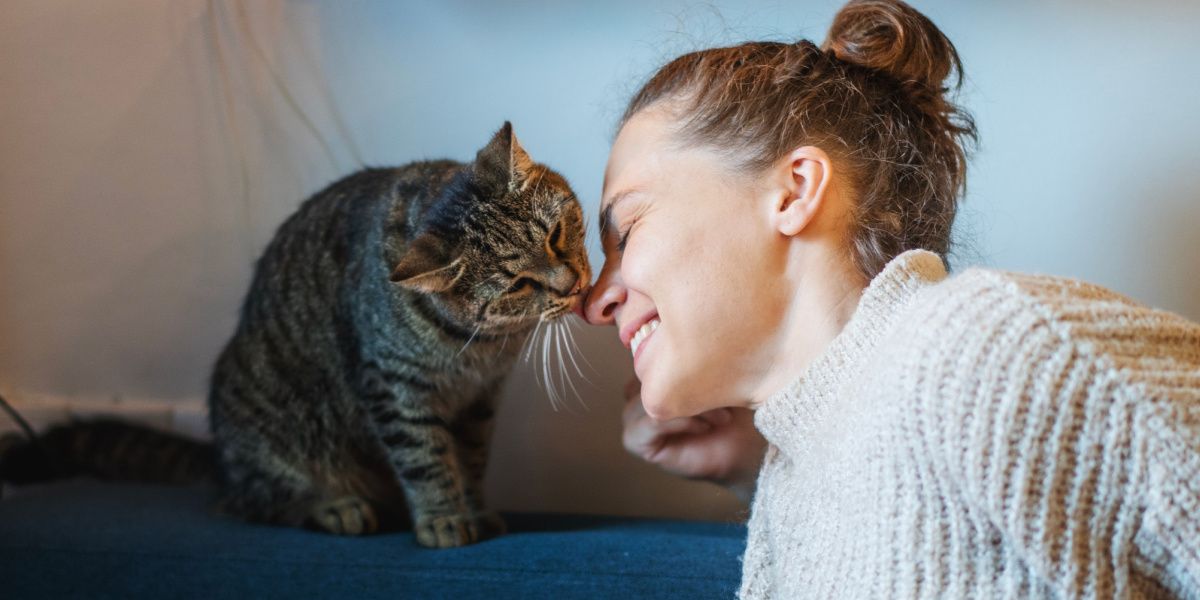
Cats seem to respond to our emotions, but this could be learned behavior rather than empathy.
Cats have a reputation for being aloof and independent, but the reality is that they are capable of forming strong bonds with their primary caregiver (that’s you!). It is widely believed that owning cats has huge benefits for our mental health and wellness.
Some scientific studies indicate cats might be capable of empathy as they do show signs of compassion toward humans. However, a lot of what we see is learned behavior based on positive reinforcement and conditioning. If you do see a sudden change in your cat’s behavior and you’re concerned, it’s best to visit your veterinarian for a checkup.
Also Read: The 25 Best Tips For New Cat Owners
Frequently Asked Questions
Do cats care about your feelings?
Cats do form strong attachments to their primary caregivers, in a similar way that dogs and babies do. You are much more than just a source of food for your cat.
Some studies on cats have shown that they are sensitive to human emotional signals and that they can tell the difference between some human emotional cues. Their responses might only be very subtle but they do respond in a way that could be taken as caring.
Do cats feel sad when you cry?
If you think your cat is looking sad, there are many reasons they might be upset. It is unlikely that they are sad because you are sad though. They don't possess the emotional intelligence to make this connection. Cats might change their behavior toward you if you are showing signs of being upset. However, they don't feel sad directly because you are sad.
What emotions do cats feel?
Cats feel all the basic emotions that humans feel. They can be scared, frustrated, happy, sad, anxious, and relieved, to name a few. Your relationship with your cat will grow when you learn how to recognize these different emotions.
-
https://link.springer.com/article/10.1007/s10071-014-0832-2#page-1
-
Merola, I. (2015). "Social referencing and cat–human communication." Animal Cognition. 18, 639–648.
-
https://journals.plos.org/plosone/article?id=10.1371/journal.pone.0211862
-
Finka, L.R. (2019). "Owner personality and the wellbeing of their cats share parallels with the parent-child relationship." PLoS ONE. 14(2): e0211862. https://doi.org/10.1371/journal.pone.0211862




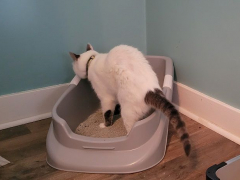



I help care for a cat colony in my neighborhood. About a month ago one of the semi-feral cats received a serious shoulder wound, perhaps from a coyote attack that seriously impaired his mobility. Today one of the other colony caregivers observed a different cat carry food we provided (using his mouth) to the injured cat: “Minnie grabbed a mouthful of chicken pieces and ran! Then, I saw her put the pieces down right in front of Puffycat (the injured cat). And, she stood there while he ate every piece.” I realize only an anecdote, but curious to know if anyone else had observed what appears to be empathic behavior in cats toward a conspecific.